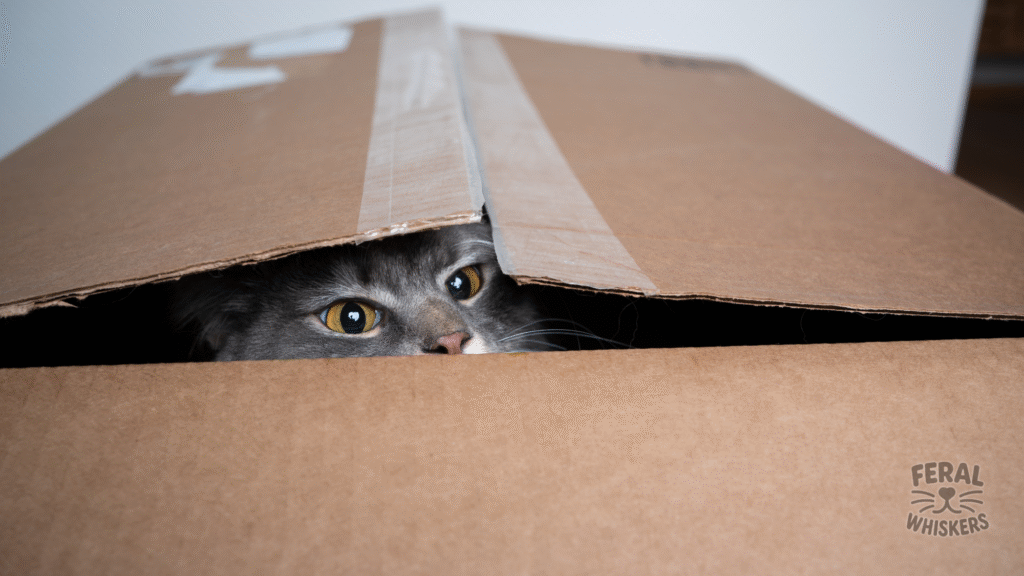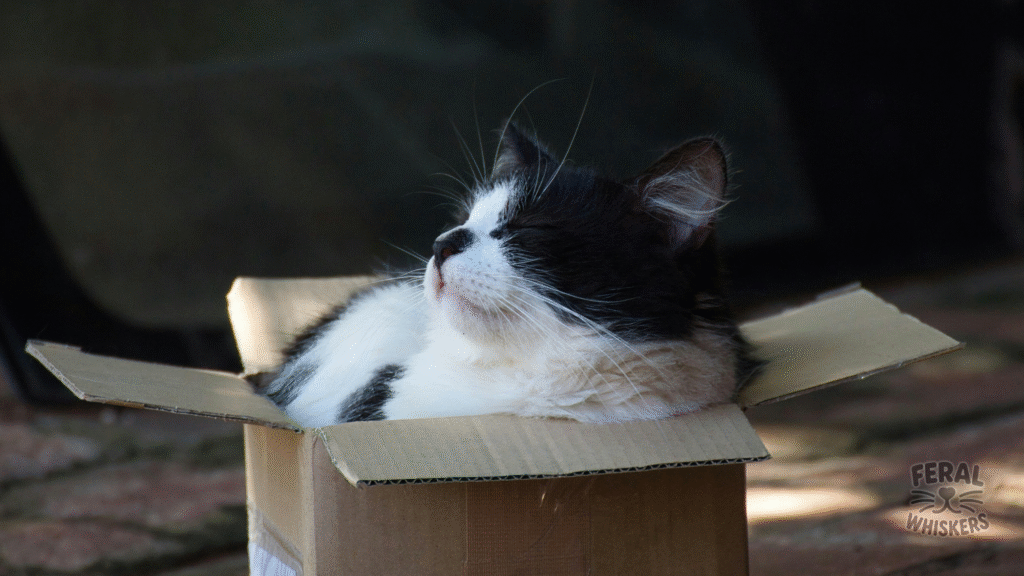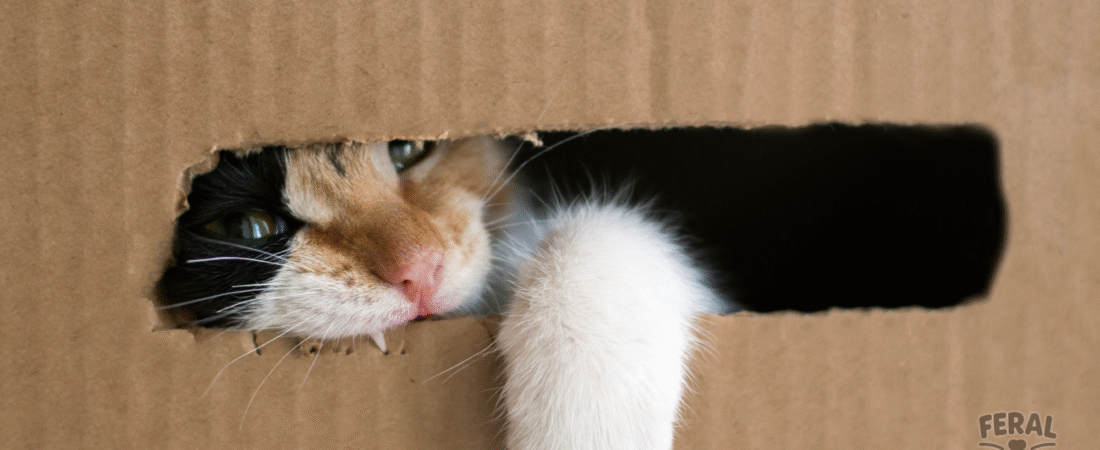📌 Cats + Boxes = True Love

It doesn’t matter if you buy your cat a luxury tree, a heated bed, or an expensive designer cushion — chances are, they’ll ditch it for the Amazon delivery box.
- The pattern: Plop a cardboard box anywhere, and within minutes, your cat is inside it, peeking over the edge like a general surveying their kingdom.
- The most absurd version: Cats squeezing into boxes that are hilariously too small, with paws and tails hanging over the edges.
- Why it’s quirky: From fancy condos to shoeboxes, cats seem hard-wired to love boxes — and it’s not random.
👉 This obsession has deep evolutionary and psychological roots.
🦠 Why Do Cats Love Boxes?
1. Safety & Security

- In the wild, cats are both predators and prey.
- A box provides a perfect hiding spot where they can see out, but others can’t see in.
- This taps into their instinctual need for safety: being in a box makes them feel safe and less exposed.
2. Ambush & Hunting Instincts
- Cats are stealth hunters, relying on hide → stalk → pounce tactics.
- A box is the ultimate ambush station. From inside, cats can “hunt” toys, your feet, or unsuspecting housemates.
- Even indoor cats retain these hunter instincts, boxes provide a stage for them.
3. Stress Reduction
- Studies show cats given cardboard boxes during shelter stays adjusted faster and showed lower stress levels.
- A box helps them feel cozy, hidden, and less anxious in overwhelming environments.
4. Warmth & Comfort
- Cats LOVE warmth — their preferred temp is 86–97°F (30–36°C), higher than most human homes.
- Cardboard insulates heat exceptionally well, creating a self-heating, cozy den for naps.
5. Curiosity & Play
- Cats are famously curious — a new box is the ultimate exploration Playground.
- Scratching, chewing, hiding, and sleeping: all feline-approved activities.
- The novelty alone triggers excitement and play behaviors.
🚨 When a Box Becomes a Problem
- Chewing Hazard: Some cats shred and eat cardboard, which can cause mild stomach upsets or constipation.
- Over-Hiding: If your cat is spending all day in a box and avoiding interaction, it may be hiding due to stress, illness, or anxiety.
- Aggressive Ambushes: Box-loving cats sometimes launch surprise attacks on other pets — funny, but stressful for the victim.
👉 Observation is key: box play should be fun, not compulsive or isolating.
🌿 Holistic & Practical Box Magic

- Provide Safe Boxes: Always remove staples, tape, or plastic handles.
- Rotate Boxes: Keep it stimulating. A new box = new toy.
- Catify the Boxes: Cut entry holes, make “peek-a-boo” windows, or even stack them into multi-level forts. Your cat will think you’ve built them a palace.
- Enrichment Tip: Hide a little catnip, a ball, or a treat in the box for an added layer of playtime.
- For Multi-Cat Homes: Offer more than one box to avoid “box wars”.
❓ FAQs
Q1: Why does my cat choose a tiny box over a big one?
Cats love being snug — tight spaces give them more security than large, roomy ones.
Q2: Is it safe to let my cat chew cardboard?
Small chews are fine. But if your cat is consistently eating cardboard, consult your vet. It may be boredom or even a condition called pica (eating non-food objects).
Q3: Why does my cat sleep in boxes instead of the fancy bed I bought them?
Cats prefer areas that feel safe, enclosed, and warm. Beds are open and exposed; boxes are cozy hideouts.
Q4: Do all cats love boxes?
Most do — but personality matters. Some cats prefer elevated perches or hidden caves over floor-level boxes.
💡 Final Thoughts
The cardboard box isn’t just trash to cats — it’s a castle, hunting blind, safety bunker, and stress-relief chamber all in one.
✅ Key takeaway: Cats don’t care about the price tag — they crave comfort, safety, and stimulation. Sometimes, the best gift really is that simple box your online order came in.

